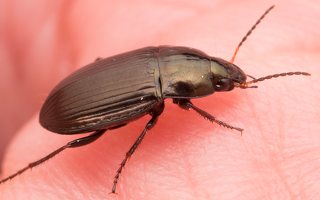 home / Insecta · vabzdžiai / Coleoptera · vabalai / Carabidae · žygiai / Amara aenea · žalsvasis laukažygis
home / Insecta · vabzdžiai / Coleoptera · vabalai / Carabidae · žygiai / Amara aenea · žalsvasis laukažygis

-
 Amara aenea · žalsvasis laukažygis
Amara aenea · žalsvasis laukažygis
-
 Amara aenea · žalsvasis laukažygis
Amara aenea · žalsvasis laukažygis
-
 Amara aenea · žalsvasis laukažygis
Amara aenea · žalsvasis laukažygis
-
 Amara aenea · žalsvasis laukažygis
Amara aenea · žalsvasis laukažygis
-
 Amara aenea? · žalsvasis laukažygis
Amara aenea? · žalsvasis laukažygis
-
 Amara aenea · žalsvasis laukažygis
Amara aenea · žalsvasis laukažygis
-
 Amara aenea · žalsvasis laukažygis
Amara aenea · žalsvasis laukažygis
-
 Amara aenea? · žalsvasis laukažygis
Amara aenea? · žalsvasis laukažygis
-
 Amara aenea · žalsvasis laukažygis
Amara aenea · žalsvasis laukažygis
Amara aenea · žalsvasis laukažygis
- common sun beetle
- Erzfarbene Kanalkäfer, Erzfarbiger Kamelläufer, Erz-Kanalkäfer, Haarrand-Schnelläufer, Metallfarbener Schnellläufer
- žalsvasis laukažygis
- bronskleurige glansloopkever, bronskleurige kameelloopkever
- skorobieżek miedziak
This is a common and often abundant species throughout the western Palaearctic region extending south into North Africa and east through Siberia to northwest China and, following introductions, it is now widespread in Canada and the north-eastern United States. In the U.K. it is generally common to the far north of Scotland including The Western Isles. The typical habitats are dry and open situations, often sparsely vegetated and exposed to the sun e.g. dunes and sandy situations generally, agricultural and wooded borders, roadsides, parkland and gardens etc.
Adults generally remain hidden by day but will venture out in warm weather when they may be seen on pathways and pavements etc. They are mostly nocturnal and searching pathways in parks and gardens will usually produce them. The adults occur year-round and are most abundant in the spring and autumn although most noticeable during the warmer months when they attract attention by day; they overwinter under bark or debris or in the soil and emerge early in the year to reproduce. Eggs are laid in dry soil among suitable vegetation and larvae appear in the spring, they are ground dwelling and omnivorous, feeding upon the eggs and larvae of other insects etc. as well as the seeds of a wide range of plants e.g. species of Tussilago, Stellaria, Plantago, Urtica, Capsella, Potentilla, they can develop entirely on a diet of either vegetable or animal origin but both the rate of larval growth and their size when fully grown is optimal on a mixed diet. They pass through 3 instars and pupate just below the soil surface, and new generation adults appear in mid-summer. The adults are also omnivorous; they climb plant stems in search of seeds and so may be seen on umbels etc. during the day, at night they climb the stems of grasses e.g. Poa trivalis or P. pratensis, and occasionally appear in abundance in areas where plants are beginning to form seeds. On occasion they will feed voraciously on aphids and so have been the subject of research into their suitability as biocontrol agents.
6.5-8.8mm; the females being on average larger than the males. A rather narrow and flattened species; the dorsal surface is black with a brilliant bronze, green or blue metallic reflection. The head is smooth and shiny with 2 setiferous punctures beside the rather weakly convex eyes, the antennae dark with the first three segments and the base of the fourth segment pale. Pronotum sub-parallel in the basal half and with the anterior angles projecting, the surface is smooth and shiny with obscure microsculpture towards the base, and the basal fovea are represented by a short and sharp streak- a good field character; the outer fovea are wide and shallow or obliterated. The lateral margins are strongly bordered and there is a setiferous puncture close to the margin of the almost perpendicular posterior angles. Elytra with weak but distinct striae complete to the apex, flat interstices and a scutellary striole as strongly impressed as the sutural stria although often fragmented, and without a basal pore. The seventh stria includes 2 preapical punctures and there is a single puncture (sometimes missing on one side) at the apex of the second. Epipleura crossed. Legs dark with the tibiae variously lighter, the apical pro-tibial spur entire; not forked. Male with dilated basal pro-tarsal segments.